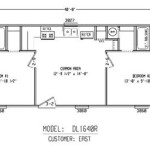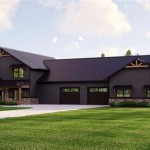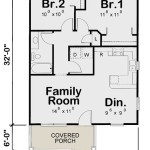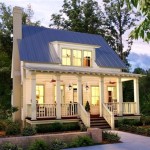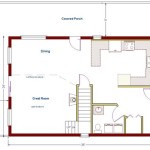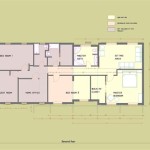1st Floor Master Bedroom Floor Plans: Design and Considerations
The integration of a master bedroom on the first floor of a home has gained significant popularity in recent years. This design choice caters to a variety of lifestyle needs, offering enhanced accessibility, privacy, and convenience. Careful consideration must be given to the layout, size, and features of these spaces to maximize their functionality and aesthetic appeal. The following explores various aspects of 1st-floor master bedroom floor plans, outlining key considerations for homeowners and designers.
One of the primary driving forces behind the increasing demand for 1st-floor master bedrooms is the concept of aging in place. As individuals plan for their long-term housing needs, the prospect of navigating stairs becomes a significant concern. Locating the master bedroom on the ground floor eliminates the need for climbing stairs, providing easier access for individuals with mobility limitations and reducing the risk of falls. This design feature is particularly beneficial for retirees and those with physical disabilities.
Beyond accessibility, a 1st-floor master bedroom can offer a greater sense of privacy. Separating the master suite from other bedrooms typically located on upper floors creates a distinct living zone, allowing occupants to enjoy a more secluded and peaceful environment. This separation can be especially appealing for families with older children or those who frequently entertain guests, as it provides a dedicated retreat for the homeowners.
The design of a 1st-floor master bedroom floor plan requires careful planning to ensure optimal functionality and spatial efficiency. The size of the room, its relationship to other areas of the house, and the inclusion of specific amenities such as en-suite bathrooms and walk-in closets are all important factors to consider. Optimizing natural light, ventilation, and acoustic insulation are also crucial elements in creating a comfortable and inviting space.
Key Considerations in Design Planning
Designing a functional and aesthetically pleasing 1st-floor master bedroom involves a multifaceted approach, carefully weighing several key aspects. These factors contribute significantly to the overall success of the design, ensuring the space meets the specific needs and preferences of the occupants.
Proximity to Living Areas: The location of the master bedroom in relation to other living areas is a critical design decision. While separation from secondary bedrooms is desirable for privacy, the proximity to areas such as the kitchen, living room, and dining room should be carefully considered. Depending on lifestyle preferences, some homeowners may prefer a more integrated layout, while others may prioritize greater separation for noise reduction and enhanced privacy. Considerations should also be given to the potential noise impact from common areas, such as television or kitchen activities, and mitigating design strategies employed.
Size and Layout: The size of the master bedroom should be proportionate to the overall size of the house and the occupants' needs. A spacious master bedroom can accommodate a seating area, a dressing table, and other additional features. The layout of the room should facilitate ease of movement and allow for flexible furniture arrangements. Adequate space is essential for comfortable living and preventing a cluttered or cramped feeling.
En-Suite Bathroom Design: The en-suite bathroom is an integral part of the master suite and should be designed with both functionality and aesthetics in mind. Key elements to consider include the size and layout of the bathroom, the selection of fixtures and finishes, and the incorporation of storage solutions. Features such as a double vanity, a separate shower and tub, and a private toilet room can enhance the luxury and convenience of the space. Proper ventilation and lighting are also crucial for creating a comfortable and healthy bathroom environment.
Enhancing Privacy and Acoustic Insulation
Privacy and noise control are paramount considerations for any bedroom, particularly those located on the first floor. Effective strategies for enhancing privacy and minimizing noise transmission should be incorporated into the design process.
Strategic Placement of Windows and Doors: The placement of windows and doors can significantly impact the level of privacy in the master bedroom. Windows should be positioned to minimize views from neighboring properties or public areas. Consider using frosted glass or window treatments such as blinds or curtains to further enhance privacy. The placement of doors should also be carefully considered to avoid direct lines of sight from other areas of the house.
Soundproofing Techniques: Effective soundproofing techniques can significantly reduce noise transmission from outside sources or other areas of the house. This can involve using sound-dampening materials in the walls, floors, and ceilings. Insulating interior walls can also help to minimize noise transfer between rooms. Solid-core doors and weather-stripping around doors and windows can further improve acoustic insulation.
Landscaping and Buffer Zones: Landscaping can also play a role in enhancing privacy and reducing noise levels. Planting trees, shrubs, and hedges around the perimeter of the property can create a visual buffer and help to absorb sound. Creating physical buffer zones, such as a hallway or a foyer, between the master bedroom and other living areas can also help to minimize noise transmission.
Accessibility and Universal Design Principles
Incorporating accessibility features into the design of a 1st-floor master bedroom is essential for creating a space that is usable by people of all ages and abilities. Universal design principles, which aim to create environments that are inherently accessible to everyone, should be considered throughout the design process.
Wider Doorways and Hallways: Ensuring that doorways and hallways are sufficiently wide allows for easy passage for individuals using wheelchairs or other mobility aids. A minimum doorway width of 36 inches is generally recommended for wheelchair accessibility. Hallways should also be wide enough to allow for comfortable maneuvering.
Accessible Bathroom Features: The en-suite bathroom should be designed with accessibility in mind. This includes features such as a roll-in shower, grab bars around the toilet and shower, and a comfort-height toilet. A vanity with knee space underneath allows for comfortable use while seated. Lever-style door handles and faucets are easier to operate for individuals with limited dexterity.
Level Thresholds and Ramps: Eliminating thresholds between rooms and using ramps instead of steps can facilitate ease of movement for individuals with mobility limitations. This is particularly important for entryways and transitions between different flooring materials. Non-slip flooring materials should be used throughout the master suite to minimize the risk of falls.
Beyond the structural considerations, the lighting within the 1st-floor master bedroom required diligent planning. Natural light is highly desirable but should be balanced with controls to manage glare and heat gain. South-facing windows, while offering abundant sunlight, might need shading devices like awnings or deep overhangs. Artificial lighting should include a combination of ambient, task, and accent lighting. Dimmers allow residents to adjust the brightness to suit different activities and times of day. Strategic placement of light fixtures can also enhance the room's aesthetic appeal and create a relaxing atmosphere.
The integration of technology can further enhance the livability of a 1st-floor master bedroom. Smart home systems can control lighting, temperature, and security features remotely. Automated window shades can easily adjust to optimize natural light and privacy. Voice-activated controls can assist individuals with limited mobility in operating various devices and systems within the room. Integrating these technologies requires careful planning to ensure seamless operation and user-friendliness.
The aesthetic design of the 1st-floor master bedroom should reflect the homeowner's personal style and preferences, while also considering the overall architectural style of the house. A cohesive color palette, carefully selected materials, and thoughtfully chosen furnishings can create a harmonious and inviting space. Attention to detail, such as decorative molding, window treatments, and artwork, can further enhance the room's visual appeal. The goal is to create a sanctuary that promotes relaxation, comfort, and well-being.

Fresh Two Story House Plan With First Floor Master Bedroom 280096jwd Architectural Designs Plans

Main Level Master Floor Plans Dustin Shaw Homes

First Floor Master Bedrooms The House Designers

First Floor Master Bedrooms Plans Not As Easy Just Adding A Room

Two Story Modern House Plan With A Master Bedroom On The First Floor

2 Story Transitional House Plan With Main Floor Master Bedroom 270044af Architectural Designs Plans

Golden Eagle Log And Timber Homes Plans Plan Details Brookside
Trend Check How Popular Are Main Level Master Suites Very Builder

House Plans With First Floor Master

Master Bedroom On Main Floor House Plans Bd Downstairs

